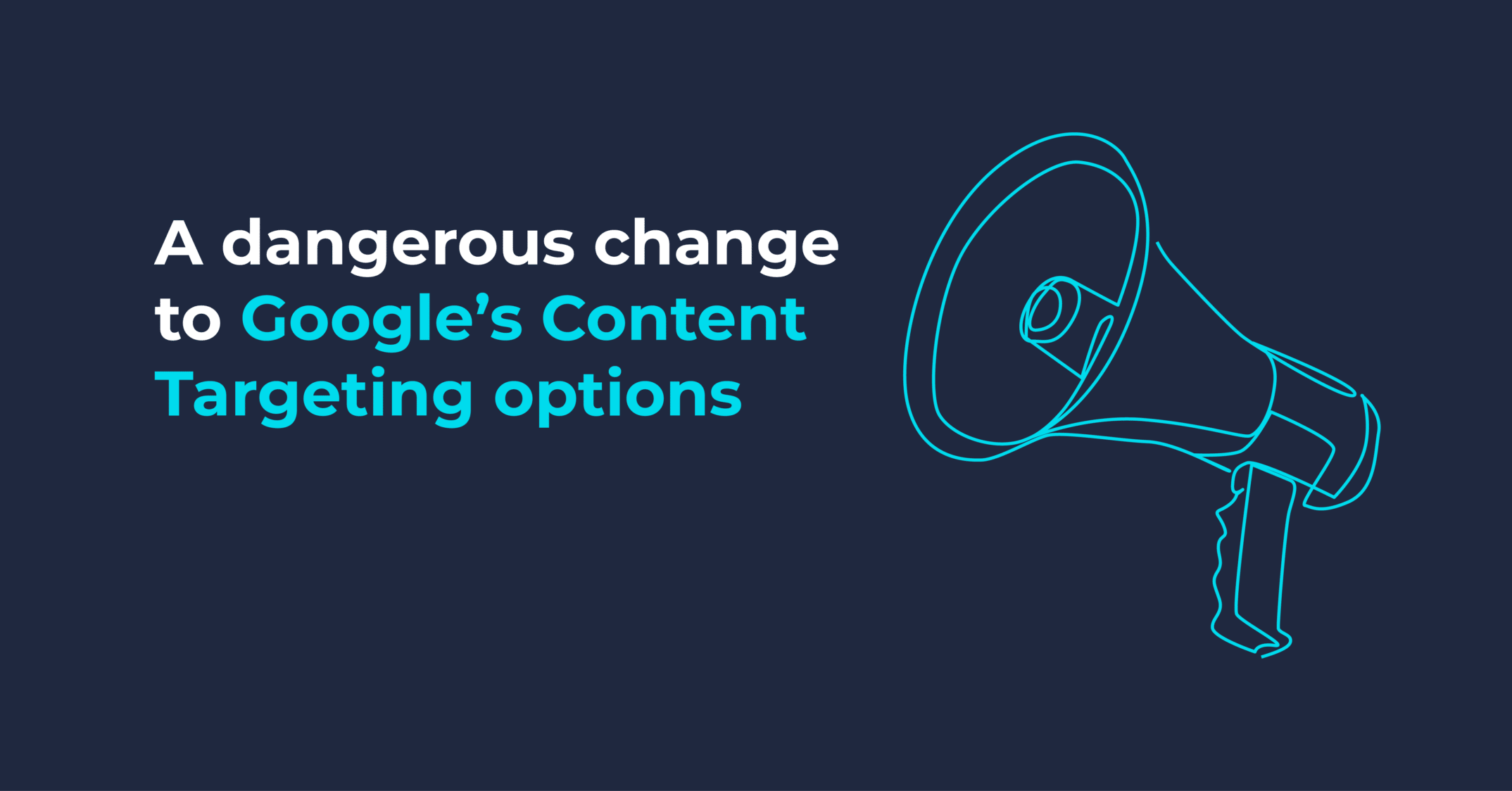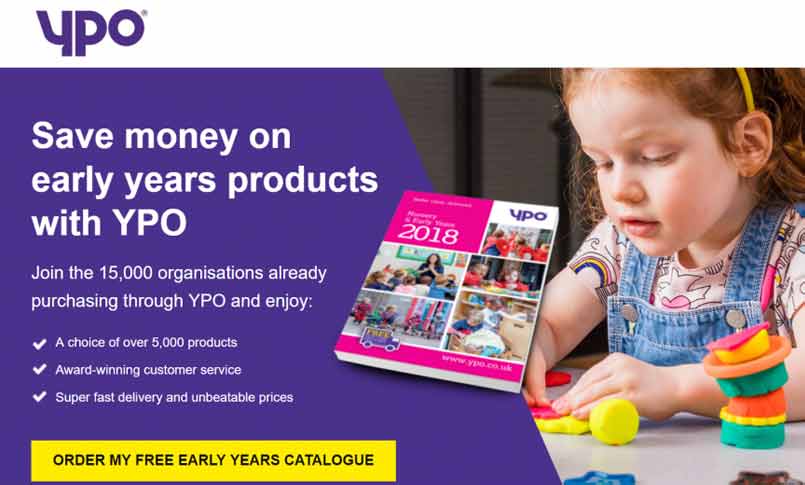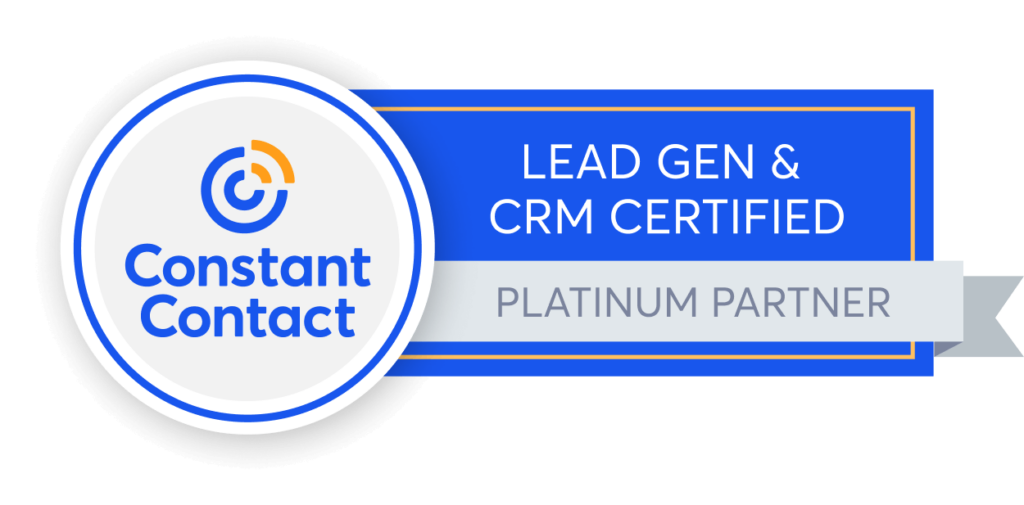
A Dangerous Change To Google’s Content Targeting Options
It’s not unusual for Google to tweak things in Google Ads in ways that can impact campaign performance. For instance there was a change to keyword match types two years ago: https://sharpahead.com/blog/google-ads-adieu-broad-match-modifier/. Usually these changes have only modest implications for running campaigns.
But yesterday we learned about a Google Ads change that is a bit of a shocker. It won’t affect every advertiser by any means, but if the changes are relevant for your campaigns then the impacts could be horrendous. Here’s the core part of the announcement:
“Also, to help you reach more potential customers, your ads will now show on content that matches any of the topics, placements, or display and video keywords you target. For example, an ad targeting a topic and a placement will be eligible for impressions which match either.
Currently, your ads can only show on content that simultaneously matches all of the topics, placements, and display and video keywords you target.”
In summary: Google are changing some display ad targeting from “AND logic” to “OR logic”. So previously we could target display ads to pages that are on specific websites AND that relate to specific topics. Now that “AND” will change to “OR”. The changes will be applied automatically to running campaigns and there’s no way to avoid this.
This might not seem all that dramatic. But here’s an analogy:
Suppose you’re a business that makes chutney. You have a regular order with a supplier for green tomatoes. Things go well for several years with your green tomatoes turning up each day. Then one day you receive a shipment with:
- A few green tomatoes – way fewer than your normal order
- Loads of red and yellow tomatoes
- Loads of cabbages, cucumbers, peas and broccoli
I think you’d be unhappy! You call the supplier. “What’s the problem?” they say. “You asked for green tomatoes. Everything we’ve sent you is either a tomato, or green. Or even both!”
The same problem applies to display campaigns that are impacted by this change – instead of reaching the exact intended audience, they will go to much broader audiences that are largely irrelevant to the advertiser’s original strategy.
Let’s look at a realistic B2B PPC example: suppose I want to show an ad for a B2B technology-related product. I might decide I want to focus my budget on dailymail.co.uk – because I think their readership is a good fit for my target demographic – but obviously the whole readership of the Daily Mail is far too broad for me to target. So I can choose to combine a second criterion and show the ad on pages that relate to technology industry news. With Google’s current setup – which has been in place for many years! – those targeting options combine to give this result:

So there are around 5,000 impressions available for ads on dailymail.co.uk on pages that relate to the technology industry. That’s a very affordable, niche target that I can go after with a budget of perhaps only a few pounds a week.
With Google’s change the number of impressions goes up dramatically:


So instead of 5,000 available impressions there are now 1.8M+370K=2.2 MILLION impressions! The audience is nearly 500x larger.
That might sound exciting but in fact it’s a disaster for this campaign. I wanted to reach Daily Mail readers who read content about the technology industry. Instead I’m now reaching ALL Daily Mail readers, and ALL pages (on the whole internet!) that carry content about the technology industry. The original strategy behind my campaign has been destroyed. In the worst case – the campaign might spend 500x more and deliver the same return. So the campaign ROI could be 500x worse!
Budget/spend implications:
Depending on budget settings, there’s a risk that some display campaigns may suddenly start spending dramatically more money. And this extra spend will mostly be wasted as the additional impressions will be outside of the original targeting intent of the campaign.
What we think:
This is an unfortunate change by Google for two reasons. Firstly, it takes away a strategy that has been really valuable for niche B2B marketers who want to make some use of Google’s Display Network. The GDN is substantially less useful for B2B marketing as a result of this change.
But secondly it sets a worrying precedent. If Google feels entitled to implement automatic changes that totally undermine the original intent behind a campaign setup, and that may dramatically damage the ROI from running campaigns, that undermines trust and confidence in the Google Ads platform.
I think this change is poorly thought out, and I hope Google will reverse it, or at least implement it in a “safer” way. But for now we have to take Google at their word and assume the change is going ahead.
What you need to do:
If you run Display campaigns on Google Ads, you need to immediately review whether any of your existing campaigns will be impacted by this change. The change may go live as soon as 1st March 2023, so you only have a few weeks. If you don’t take action you risk seeing your Google Display spend rising dramatically for little or no return.
For Sharp Ahead retained clients:
We will be proactively reviewing the impact of this change on all Google Ads accounts where we are currently engaged for PPC management. At a minimum, we will arrange to pause any campaigns where we are concerned about the negative impact.






